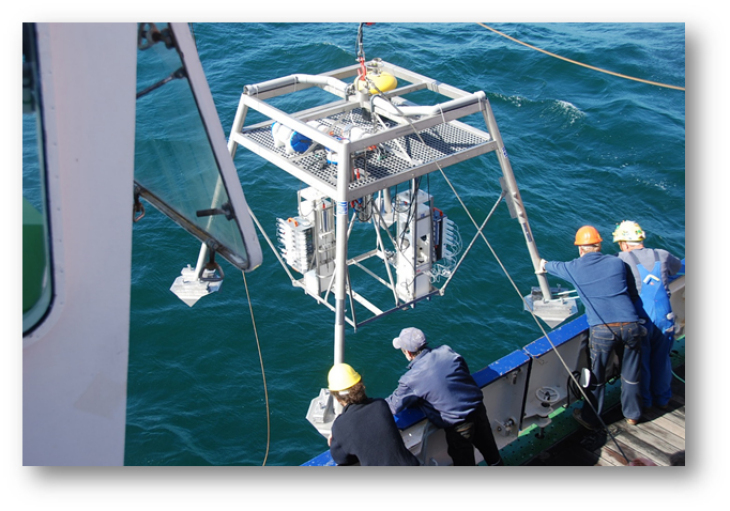Work Package 2: Observing Benthic Processes
Activities in WP2 will comprise extensive field campaigns in predefined areas of the German Bight to monitor the spatial and temporal variability of key benthic processes in and between representative habitat types.
The results will fill existing knowledge gaps in the understanding of physical forcing, nutrient cycling, pollution status, organism assemblages and trophic structure of the representative benthic habitats.

NOAH scientists use ship based methods as hydroacoustic profiling and sediment sampling as well as different autonomous sea bed landers for the observation of biogeochemical and physical processes at the seafloor. Photo: Christian Winter, Marum
Objectives
The main objective of WP2 is to describe and quantify the spatial and temporal variability of small-scale geophysical, biogeochemical and faunal processes in and between representative seafloor areas, and to provide parameterizations and ground truth data for numerical models. Sub objectives are:
- To quantify turbulence and small-scale morphodynamics in the benthic boundary layer
- To measure oxygen dynamics and diagenetic fluxes across the sediment-water interface
- To undertake hydroacoustic habitat mapping
- To determine pollutant budgets and transport processes
- To quantify bioturbation potentials of benthic organism assemblages
- To provide validation datasets and model parameterisations of biogeochemical processes to WP3
- To contribute to the habitat atlas and indicator development activities in WP1 and WP4, respectively
- To publish advances in technical and scientific knowledge
Work Package Leader: Christian Winter (MARUM), Norbert Theobald (BSH)
